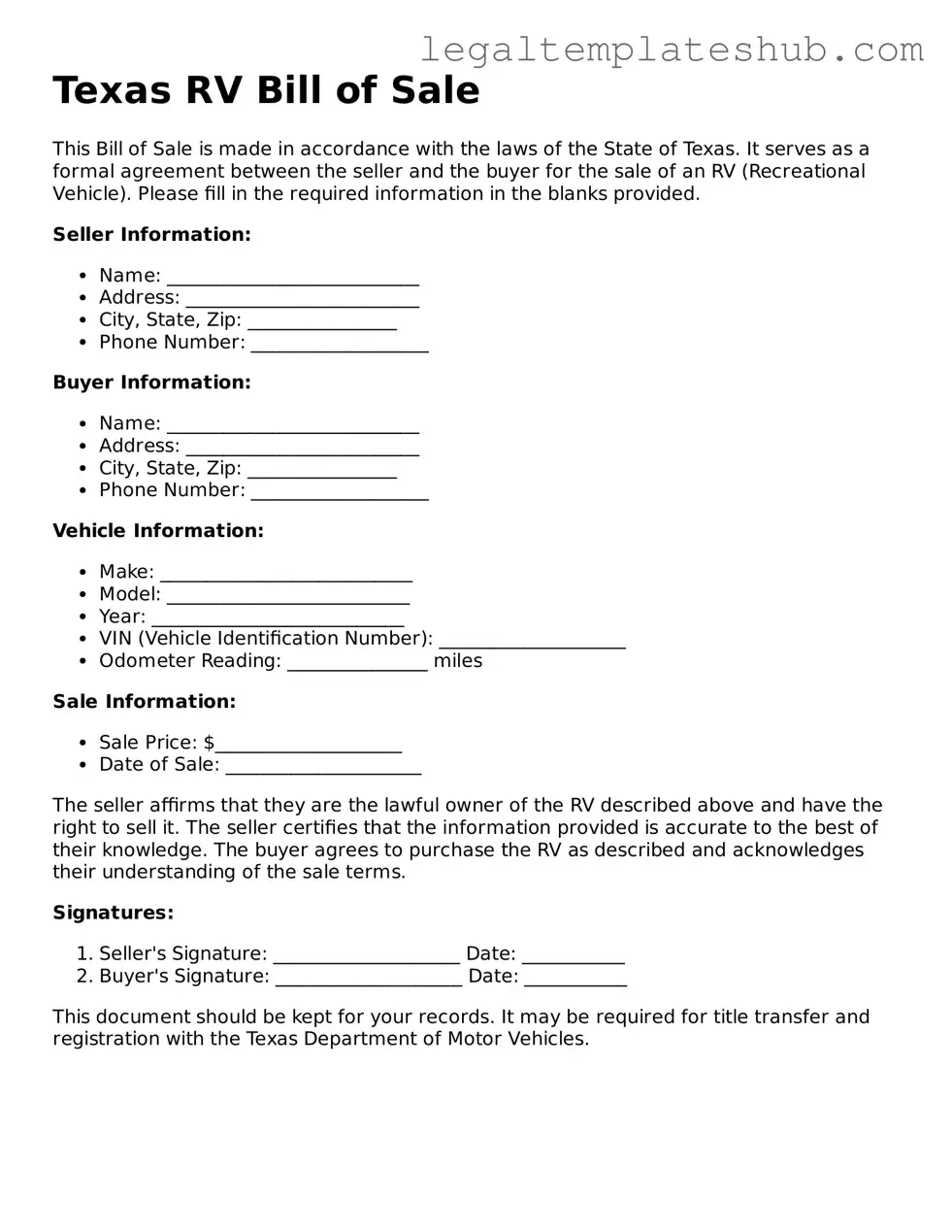Printable RV Bill of Sale Document for Texas
The Texas RV Bill of Sale form is a legal document that records the transfer of ownership of a recreational vehicle in Texas. This form serves as proof of the sale and includes important details about the buyer, seller, and the RV itself. To ensure a smooth transaction, it's essential to fill out this form accurately; start by clicking the button below.
Access Editor
